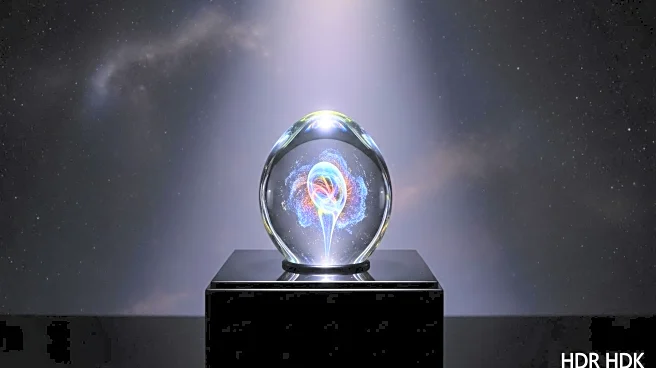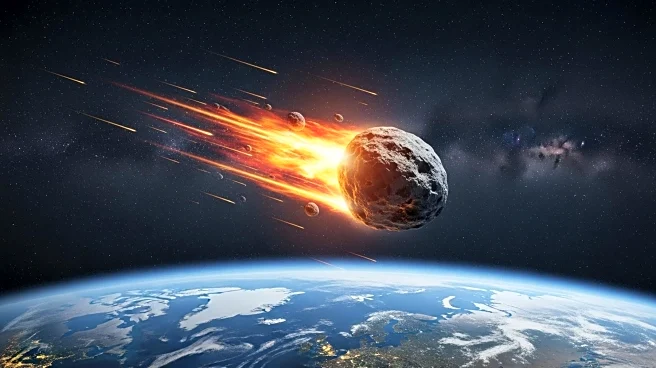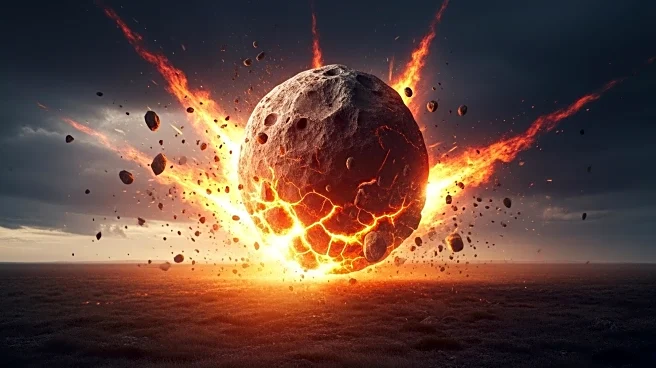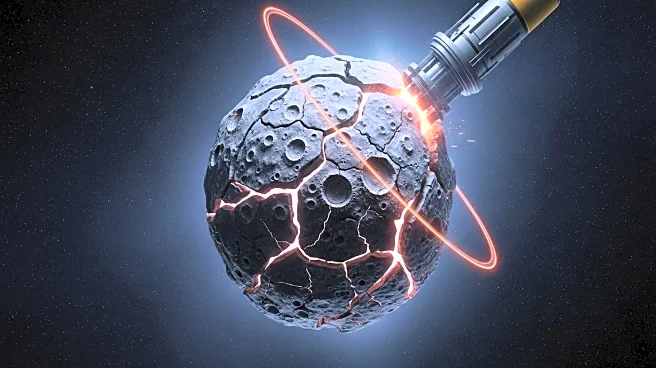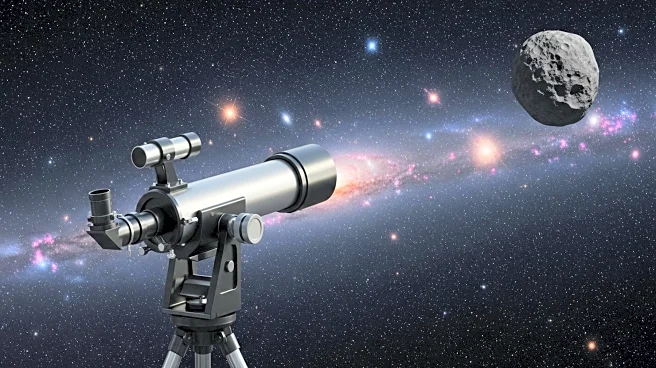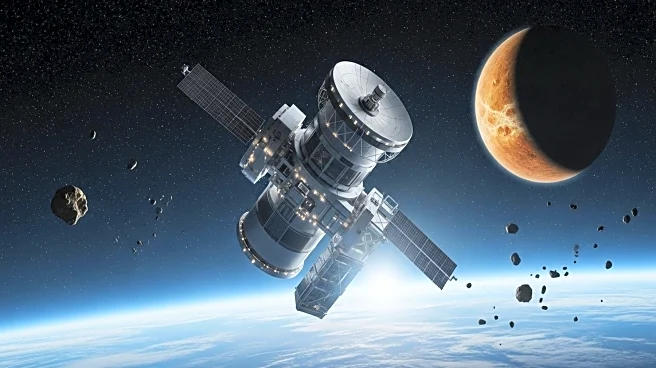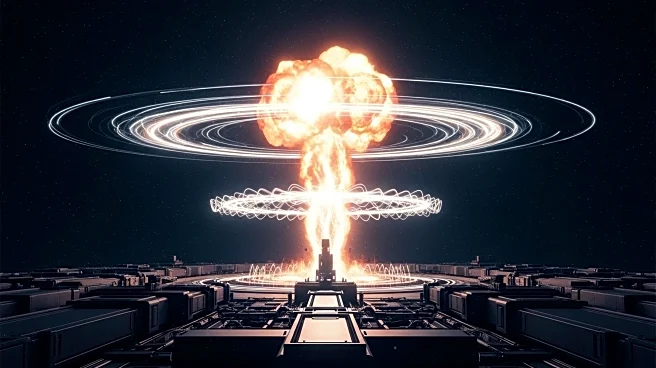What's Happening?
The Silverpit Crater, located under the North Sea, has been confirmed as the result of an asteroid impact that occurred 43 to 46 million years ago. This conclusion comes after years of debate among geologists, with some attributing the crater to other geological processes. Recent high-tech seismic imaging and microscopic analysis have provided evidence of classic impact crater signatures, such as a central rise and concentric fault zones. Additionally, shocked minerals found in nearby rock samples further support the asteroid impact hypothesis. The crater's formation involved a 160-meter-wide asteroid impacting at high speed, creating a kilometer-deep crater and triggering a massive tsunami.
Why It's Important?
The confirmation of Silverpit as an impact crater provides valuable insights into Earth's geological history and the effects of asteroid impacts on ocean environments. This discovery enhances our understanding of mid-size asteroid impacts, which can have catastrophic consequences for regional ecosystems. The preservation of Silverpit offers a rare opportunity to study impact processes that are typically erased by erosion and sedimentation. These findings contribute to planetary defense research, helping scientists predict and mitigate potential future asteroid impacts.
Beyond the Headlines
The study of Silverpit Crater highlights the fragility of Earth's impact record, as many craters are lost to geological processes over time. The preservation of Silverpit under sediment layers allows researchers to explore the long-term effects of asteroid impacts on marine environments. Further drilling into the crater could yield additional data, improving models of ocean impact dynamics and informing future infrastructure planning in coastal regions.

